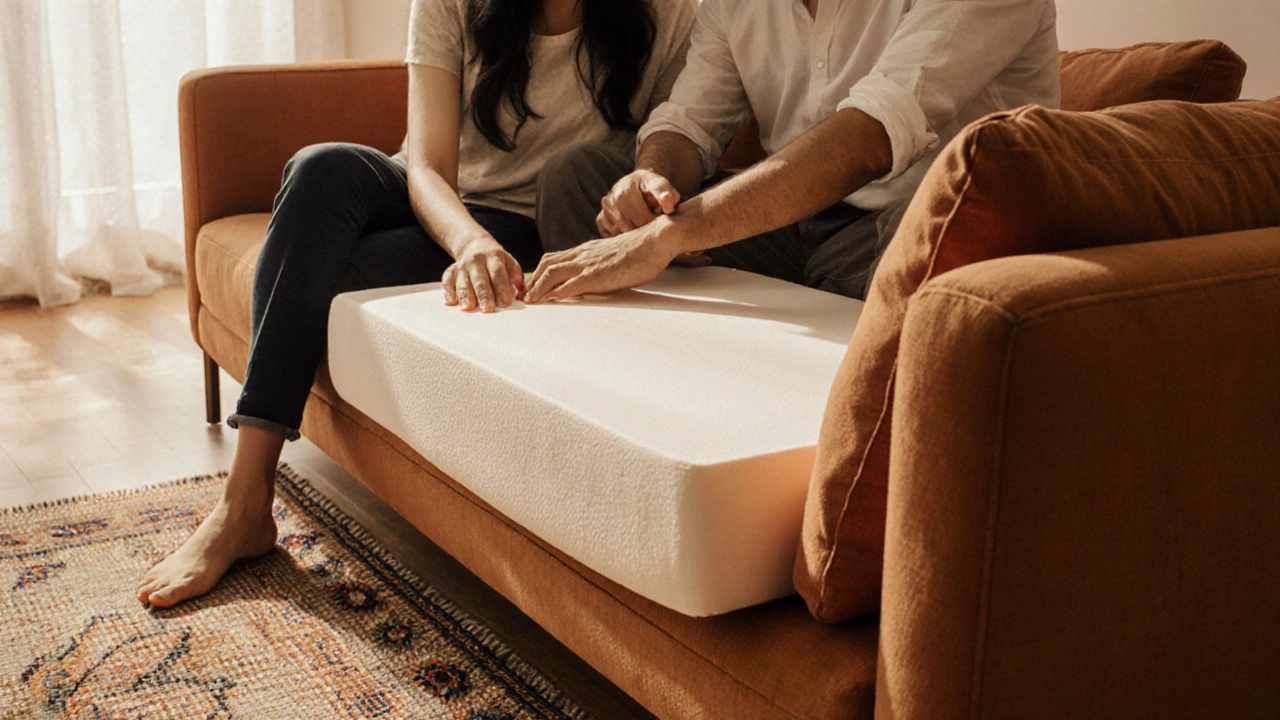Seat Cushion Comfort: Quick Tips for a Better Sit
Ever feel a sore behind after a few hours on a chair? The culprit is often the cushion you’re using. A good seat cushion does more than add a soft layer – it supports your spine, eases pressure points, and can even improve circulation. Below you’ll find straight‑forward advice for picking, placing, and caring for a cushion that keeps you comfortable all day.
Pick the Right Cushion for Your Body
First, think about where you spend most of your time. Office chairs, car seats, and kitchen stools all have different shapes and pressure spots. A memory‑foam cushion works well for office chairs because it molds to your shape and spreads weight evenly. If you sit on a hard surface like a metal bar stool, a gel‑infused cushion can add a cool, supportive feel.
Next, check the thickness. Too thin and you’ll still feel the hard seat; too thick and you might lose proper alignment. A 2‑3 inch thickness is a safe middle ground for most adult users. Also, look for a cushion with a breathable cover – mesh or woven fabric lets air flow and prevents sweat buildup.
Set Up Your Cushion for Maximum Support
Placement matters just as much as the cushion itself. For a regular office chair, position the cushion so the thicker part sits under your tailbone and the edge supports the curve of your lower back. If you’re using it in a car, slide it all the way back so the front edge aligns with the seat belt, which helps keep you upright.
Don’t forget to test the height. Sit down and see if your feet touch the floor comfortably; you shouldn’t have to lift your legs or feel like you’re perched on a platform. Small adjustments, like adding a thin folded towel under the cushion, can fine‑tune the height without buying a new product.Finally, give the cushion a short break every hour. Even the best cushion can’t replace the need to move. Stand up, stretch, and walk a few steps to reset pressure points and keep blood flowing.
Keeping your cushion in shape is easy. Spot‑clean the cover with a mild detergent when you notice stains. Most foam cores don’t need water – just a quick wipe with a damp cloth will do. If the cushion starts to lose its shape after months of use, flip it over. Many foam cushions are double‑sided, so rotating them restores even wear.
In a nutshell, seat cushion comfort boils down to three things: match the material to your seat type, set it up at the right height, and maintain it with regular cleaning and rotation. Follow these steps and you’ll notice less soreness, better posture, and a more relaxed workday. Ready to give your seat a boost? Try one of the recommended options and feel the difference in just a few minutes.
The Best Filling for Sofa Seat Cushions: Comfort, Durability & Style
Discover the top sofa seat cushion fillings, compare foam, down, latex and hybrid options, and learn how to pick the perfect material for lasting comfort and style.
View More




